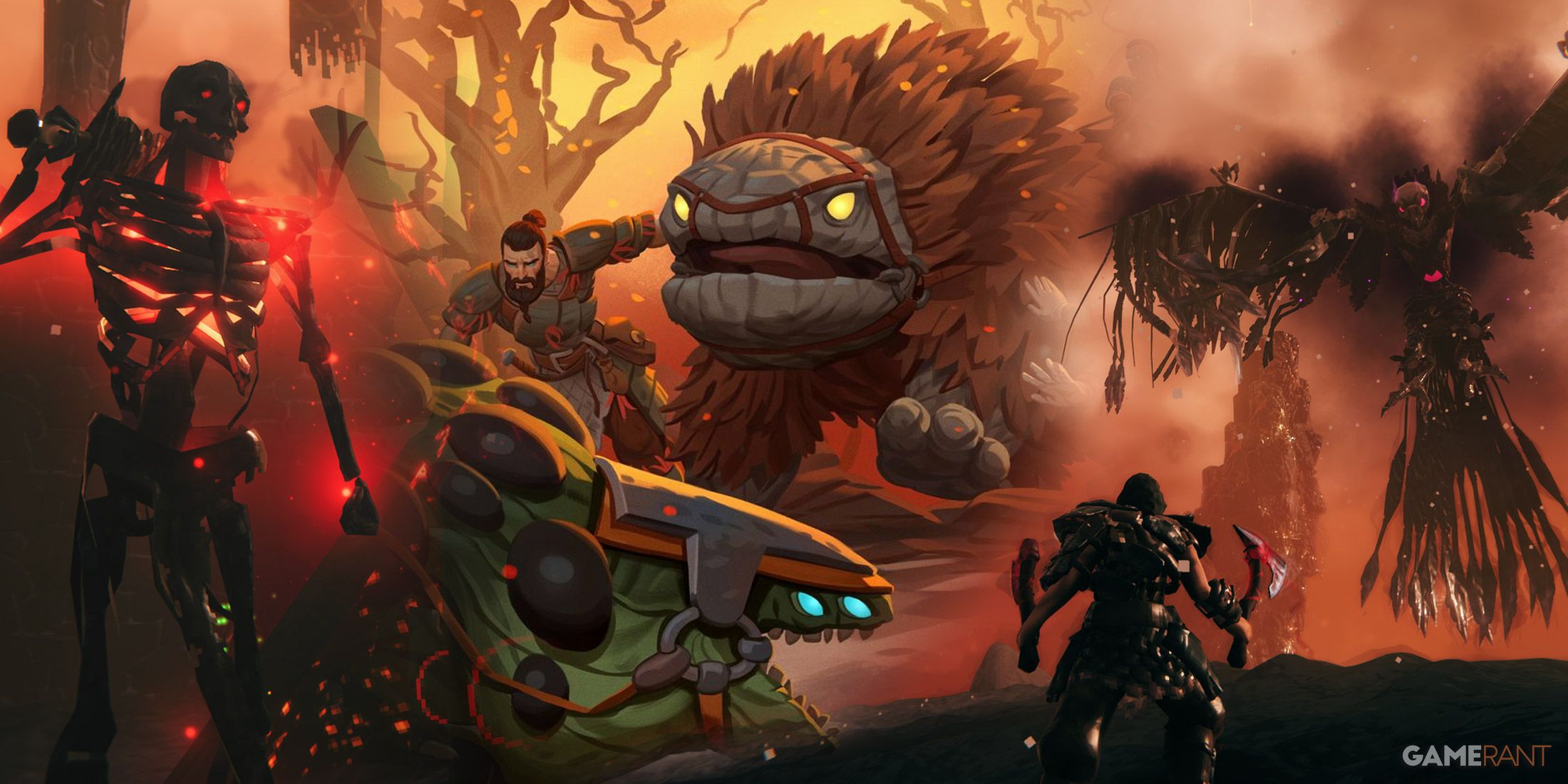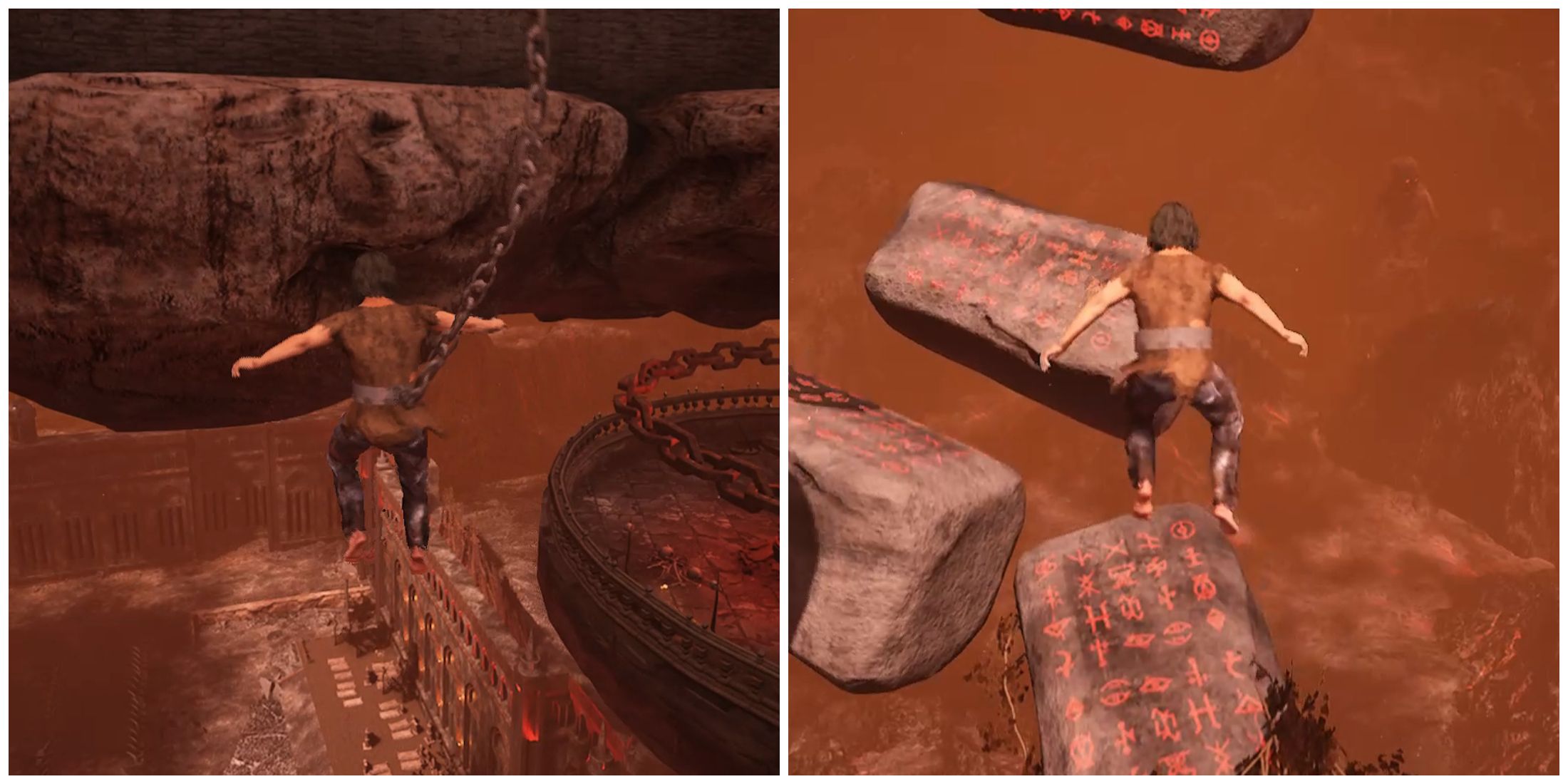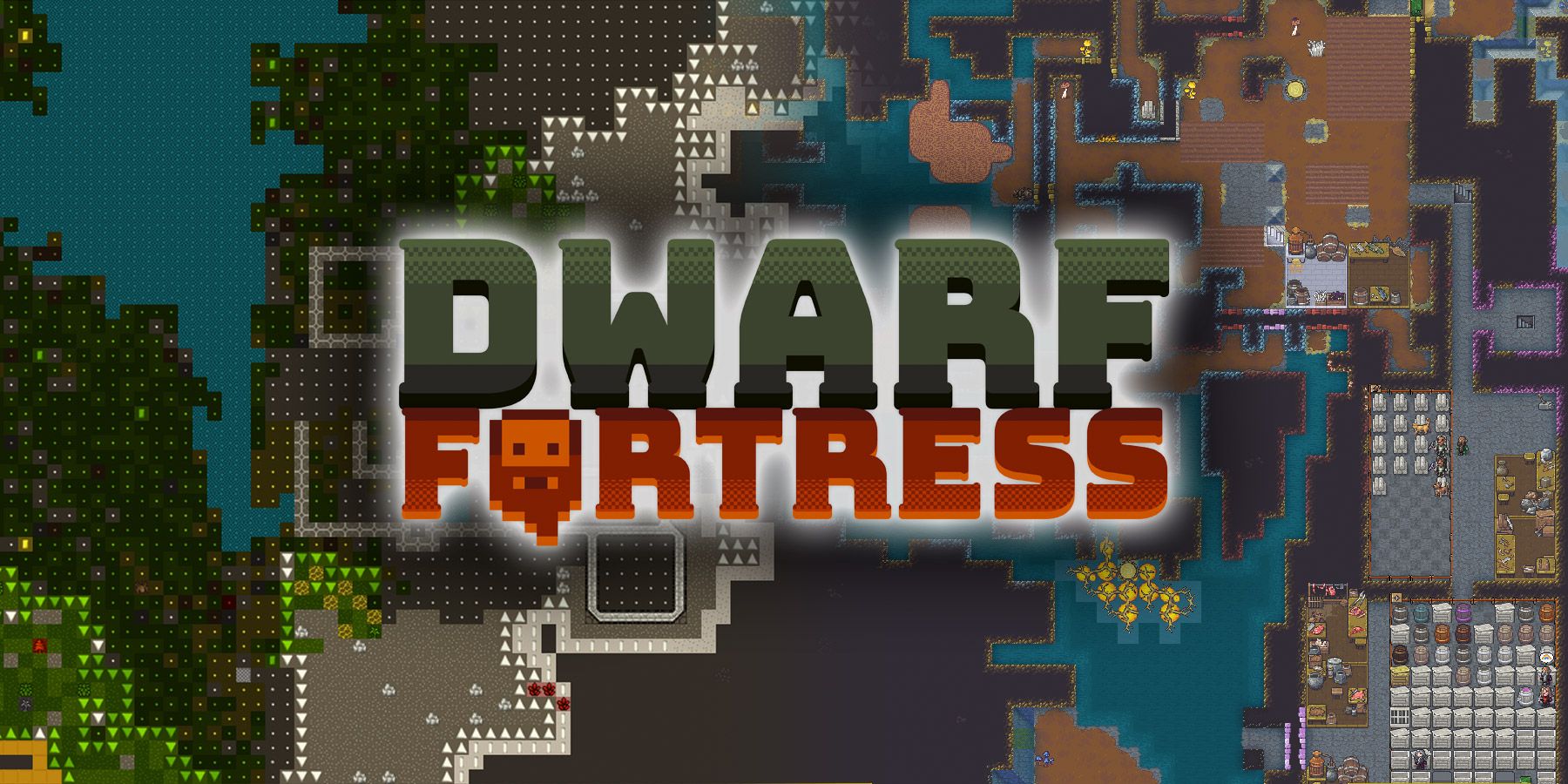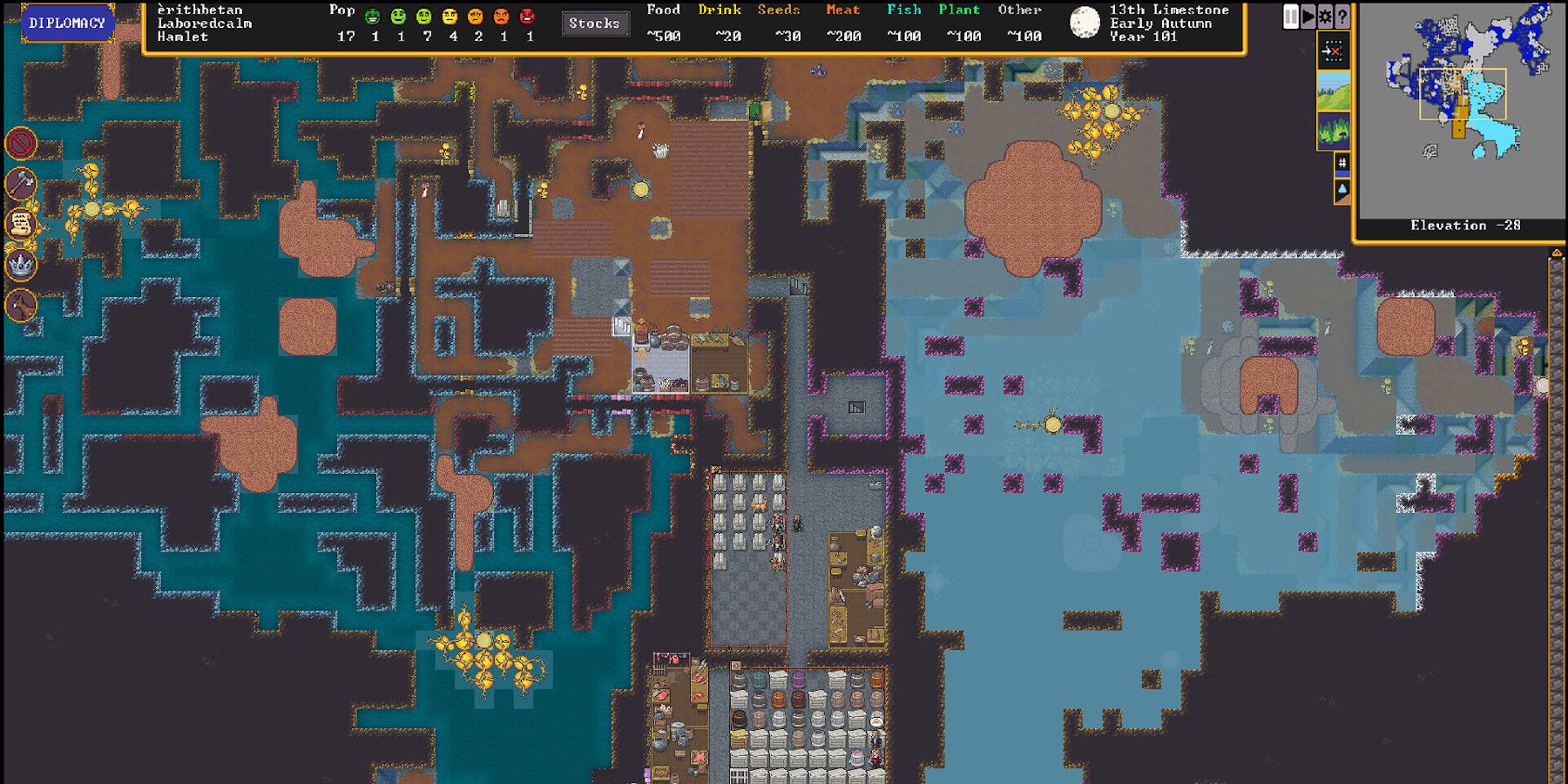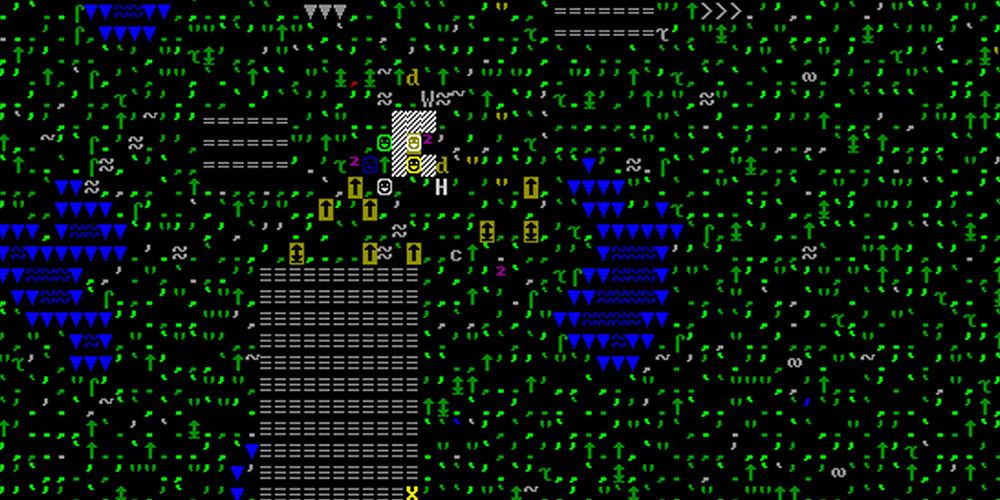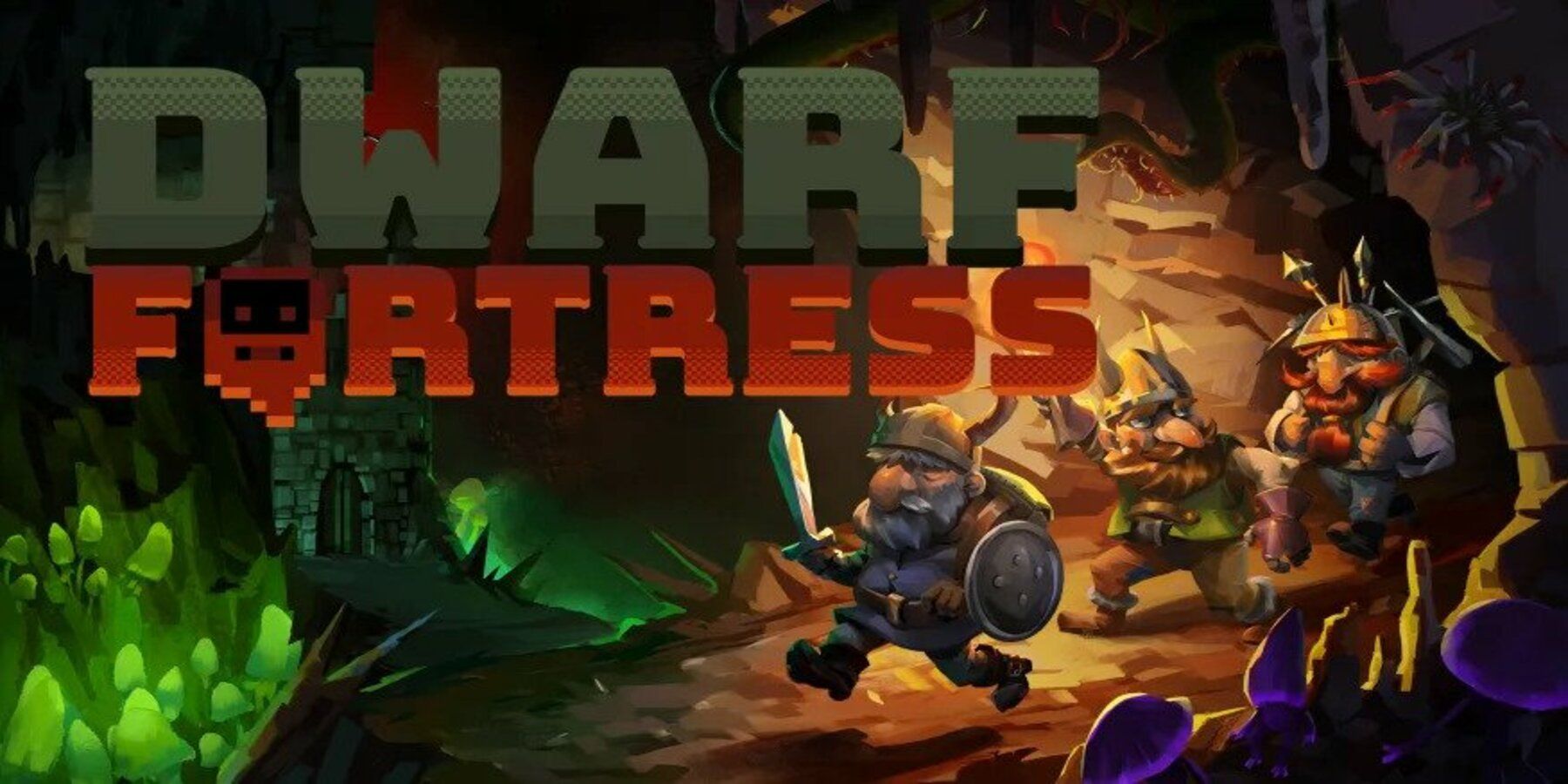With the long-awaited Steam release of the legendary simulation game Dwarf Fortress finding such popularity, there are many players who may be entirely unaware of the game’s deep history. After 20 years of development by just two brothers, Slaves to Armok: God of Blood Chapter 2: Dwarf Fortress, colloquially known as Dwarf Fortress, has become one of the most intricate and beloved games in the management sim genre. It is difficult to understate the cultural significance of Dwarf Fortress. The game has been studied and featured in several scholarly articles, was part of a showcase on video game history at the MoMA, and served as a major inspiration for Minecraft, Rimworld, and Prison Architect.
Dwarf Fortress has remained unmatched in the depth of its simulation mechanics. What makes Dwarf Fortress all the more interesting is that despite its overwhelming success, according to its developers, the game remains far from finished. According to the Dwarf Fortress Steam page, "With the goal of simulating all of existence, Bay 12 estimates they’re only about 44% done." The game is said to be more than 20 years away from completion, and has essentially become the life's work of its developers, who plan to continue release updates long after the game's 1.0 release.
Explaining Dwarf Fortress Gameplay and Game Modes
Tarn and Zach Adams, the brothers behind Dwarf Fortress, have gone on record describing the game as essentially an open-ended story generator, giving players a system built to provide a limitless variety of unique experiences. The game's ability to create fantasy epics with the depth and length of a novel series despite its non-linear design is a testament to the quality of its simulation ability. Dwarf Fortress is complex enough that even with three distinct game modes, the simulation can produce compelling outcomes consistently. These game modes are Fortress, Adventurer, and Legends. Any world generated in Dwarf Fortress can be experienced in each of these three modes.
Fortress is the most popular mode in Dwarf Fortress, where players control an entire colony of dwarves who must build a fortress and survive the harsh threats of the world around them. The player can customize their fortress location, their dwarves' personalities and skills, and select the starting resources their dwarves will possess. Players' chosen fortress location can wildly impact the geology, biome, and challenges players will face when directing their dwarves. The feature that makes Fortress distinct from the other modes is that the player controls the dwarves in a macro sense, giving them designs and larger tasks to complete before the dwarves' AI, chosen skills, and personalities decide how to execute on those directions.
Adventurer is a mode that essentially allows the player to explore a procedurally generated roguelike RPG. Players create a party or a solo adventurer that can explore the world, venturing through a variety of dungeons, settlements, and even the player's own retired fortresses. In Adventurer, the player cannot craft or build much of what is available in Fortress, but the game mode itself is still in need of significant development and expansion. Adventurer still gives players a unique array of options to explore the world, including a quest system which players can engage with as they travel the world. This mode is intended to become a more comprehensive and polished narrative RPG experience in later Dwarf Fortress updates.
Legends is the most unique of the three game modes, letting players explore the history of their simulated world rather than participate in it. Since each Dwarf Fortress world is randomly generated at the start, each one comes with its own unique historical context that the player can read about and explore in Legends mode. As the player ventures through a given world in either Fortress or Adventurer mode, their actions and achievements will also be cataloged in the game's archives and made viewable in Legends mode.
What's New In Kitfox's Steam Release of Dwarf Fortress
Published by Kitfox Games, the Steam release for Dwarf Fortress is the most accessible version of the game released to date and features a full graphical overhaul and soundtrack. The original art for the game was made entirely of ASCII, the collection of symbols, numbers, and letters recognized by computers, but the Steam release has added graphics and tilesets by pixel artists Carolyn Jong and Neoriceisgood. The updated graphics were integrated using a system developed by Dwarf Fortress modders Michał “Mayday” Madej and Jacob "Ironhand" Bowman. The 15-track soundtrack was produced by Dabu, Simon Swerwer and Agueda Macias and even includes songs performed in the dwarvish language.
Tutorials that help new players get into the game are the Steam release's biggest feature. The old-school visuals and notorious complexity of Dwarf Fortress can be daunting for many, and the studio's focus on accessibility bodes well for the longevity of the project. These quality of life improvements have made Dwarf Fortress easier to play and enjoy, but the developers have assured long-time fans that these changes to make the game more accessible will not impact the core Dwarf Fortress experience now or in the future.
What Makes Dwarf Fortress So Unique
In 2022, it's easy to look at Dwarf Fortress as a gaming relic rather than a living, breathing piece of gaming culture. While the immense complexity of its management sim mechanics won't be for every player, the experience that Dwarf Fortress offers players truly cannot be found elsewhere. Despite a small development team, limited crowdsourced funding, and years of production, the game continues to enhance and deepen its simulation of fantasy dwarven life.
These dwarven lives can be so much more than just the shifting of variables and pixels. They can feel nearly human in their authenticity. The real power of Dwarf Fortress is the ways that its simulation can produce organic, player-driven stories that aren't planned, but simply enabled by a deep and meticulously-tuned simulation. When players read the long list of thoughts, beliefs, goals, and detailed biology of their dwarves, they may find themselves creating stories out of simulated events without realizing it. As the AI of the dwarves interact with each other and the world around them, their lives slowly take on a deeper significance.
All the interweaving pieces of code behind the scenes create battles, resources, relationships, and all the characters that navigate them. The player witnesses a kind of simulated history: the story of a fortress and those that lived within it. It's one of the reasons the fan community for Dwarf Fortress is so active -- players create comics, diaries, journals, and other media depicting the stories of their fortresses and dwarves.
What makes Bay 12 Games so special is how such a small team has captured the imagination of artists and creatives all across the world. Dwarf Fortress represents the potential of video games to make grand and beautiful stories out of systems and rule sets. It's an experience that any fan of simulation and strategy games, fantasy role playing, or the history of video games would do well to play. With the goal of simulating all of existence, Bay 12 Games has brought players an experience without comparison that only grows more brilliant each passing year.
Dwarf Fortress is available on PC.

